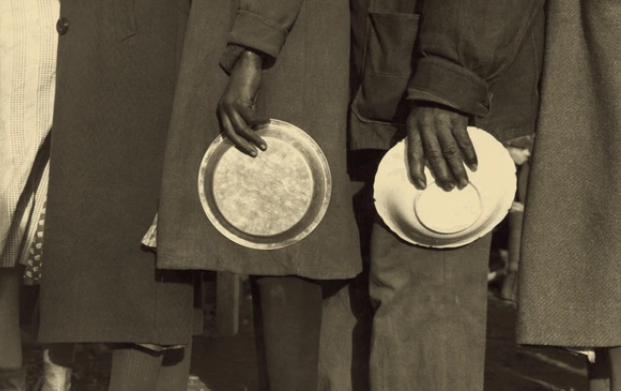Introduction to the Great Mississippi Flood of 1927
The Great Mississippi Flood of 1927 is etched into history as one of the most severe and devastating floods ever to hit the United States. Originating in the spring of 1927, this flood inundated the Mississippi River Basin, wreaking havoc across numerous states, including Louisiana, Mississippi, Arkansas, and Tennessee. The flood’s scale was unprecedented, affecting millions of people and causing extensive damage to communities, agriculture, and infrastructure.
The gravity of the Great Mississippi Flood of 1927 cannot be understated. The disaster not only led to immediate suffering and destruction but also brought about significant changes in flood management policies and disaster response strategies. Understanding the intricacies of this historic event helps us appreciate the evolution of flood control measures and the critical lessons learned from such a catastrophic disaster.
Read Also : American Revolutionary War: The Crucial Battles of Lexington and Concord (1775)
Historical Account of the Great Mississippi Flood of 1927
Causes of the Flood
The historical account of the Great Mississippi Flood of 1927 begins with a combination of meteorological and environmental factors that created the conditions for this catastrophic event. A series of severe storms and persistent heavy rainfall occurred across the Mississippi River Basin, resulting in a record-breaking volume of water flowing into the river. The snowmelt from the northern regions further exacerbated the situation, contributing to the already swollen river.
The floodwaters, driven by these extreme conditions, tested the limits of existing flood control systems. Levees and other flood defenses, designed to contain and manage the river’s flow, were overwhelmed by the sheer volume of water. As a result, levees failed at multiple points, allowing floodwaters to breach their banks and inundate surrounding areas. This failure of flood control infrastructure was a major factor in the widespread and severe impact of the flood.
Levee Failures
The levee failures during the Great Mississippi Flood of 1927 were a critical aspect of the disaster’s severity. The levee system, which had been constructed to protect communities and agricultural lands from flooding, proved insufficient under the extreme pressure exerted by the floodwaters. Levees were breached in several locations, resulting in rapid and uncontrolled flooding that inundated vast areas of land.
The consequences of these levee failures were profound. Homes, businesses, and farmland were submerged, leading to extensive property damage and displacement of residents. The flood’s impact was compounded by the failure of levees, highlighting the need for a comprehensive reassessment of flood management practices. The catastrophic levee breaches underscored the necessity for more robust flood control measures to prevent similar disasters in the future.
The Impact of the Great Mississippi Flood of 1927 on Agriculture
Destruction of Farmland
The impact of the Great Mississippi Flood of 1927 on agriculture was immense and devastating. Farmland across the affected regions was submerged under floodwaters, resulting in the destruction of crops and the contamination of soil. This had immediate and long-term consequences for the agricultural sector, as farmers faced significant losses from ruined or lost crops.
The flood’s effects on agriculture were not confined to immediate damage. The erosion of fertile topsoil due to prolonged inundation further exacerbated the challenges faced by farmers. The recovery process for agriculture was lengthy and complex, involving the restoration of soil health and the rebuilding of agricultural infrastructure. The flood highlighted the vulnerability of agricultural production to natural disasters and emphasized the need for improved flood management strategies to safeguard vital agricultural resources.
Read Also : Roe v. Wade: The Landmark Supreme Court Decision on Abortion Rights (1973)
Economic Consequences
The economic consequences of the Great Mississippi Flood of 1927 were extensive and far-reaching. The immediate economic impact included the loss of crops, livestock, and agricultural infrastructure. The disruption of agricultural production led to a decline in income for farmers and affected local businesses that depended on agriculture.
The flood’s aftermath required substantial financial resources for recovery and rebuilding efforts. The costs associated with repairing damaged infrastructure, providing relief to displaced individuals, and restoring agricultural production were significant. The economic strain on both local communities and federal resources underscored the need for effective disaster response and recovery strategies. The flood’s impact on the economy had lasting implications, shaping future approaches to managing natural disasters and supporting affected communities.
Response and Recovery Efforts After the Great Mississippi Flood of 1927
Federal Response
In the wake of the Great Mississippi Flood of 1927, the federal government played a pivotal role in the response and recovery efforts. President Calvin Coolidge and his administration mobilized resources to address the immediate needs of affected communities. Federal agencies coordinated relief efforts, including the provision of food, shelter, and medical care to those displaced by the flood.
The establishment of the Mississippi Valley Relief and Rehabilitation Commission was a key component of the federal response. This commission was responsible for overseeing the distribution of resources and managing recovery efforts. The federal response was crucial in providing emergency aid and facilitating the recovery process, helping to mitigate some of the immediate suffering caused by the disaster.
Relief Organizations
In addition to government efforts, charitable organizations played a significant role in the response to the Great Mississippi Flood of 1927. The American Red Cross and other relief organizations were instrumental in providing essential support to affected individuals and communities. These organizations distributed food, clothing, and medical supplies, established temporary shelters, and offered financial assistance to those in need.
The collaboration between government agencies and relief organizations was essential in managing the scale of the disaster. The efforts of these organizations complemented federal initiatives and were crucial in addressing the immediate and long-term needs of displaced populations. Their contributions were vital in the overall recovery process and in alleviating the suffering caused by the flood.
How the Great Mississippi Flood of 1927 Changed Flood Management
Advances in Flood Control Infrastructure
The Great Mississippi Flood of 1927 served as a catalyst for significant advancements in flood control infrastructure. The severity of the flood highlighted the deficiencies in existing flood management systems and prompted a reevaluation of flood control practices. In response, there was a concerted effort to strengthen and expand levee systems, improve river management techniques, and develop new flood control measures.
The investment in flood control infrastructure aimed to enhance the resilience of communities and reduce the risk of future flooding. These advancements included the construction of more robust levee systems, the implementation of advanced flood forecasting and management technologies, and the development of comprehensive floodplain management plans. The improvements in flood control infrastructure reflected a shift towards a more proactive and integrated approach to flood management.
Legislation and Policy Changes
The Great Mississippi Flood of 1927 also prompted significant changes in flood management legislation and policies. The Flood Control Act of 1928 was a landmark piece of legislation that authorized federal funding for flood control projects and established guidelines for managing flood risks. This act marked a shift towards a more coordinated and federal approach to flood management.
The Flood Control Act of 1928 laid the groundwork for future flood control initiatives and emphasized the importance of federal involvement in disaster preparedness and response. The legislation provided a framework for managing flood risks and supporting affected communities, influencing flood management policies and practices in the years that followed.
Social and Economic Effects of the Great Mississippi Flood of 1927
Displacement of Communities
The Great Mississippi Flood of 1927 resulted in the displacement of hundreds of thousands of people. The flood forced residents to evacuate their homes and seek temporary shelter in relief camps and other facilities. The displacement caused significant social disruption, as families were separated from their homes and communities.
The need for temporary housing and support services was critical in addressing the immediate needs of displaced individuals. Relief efforts included the establishment of temporary shelters, the provision of emergency supplies, and the coordination of support services to assist those affected by the flood. The social impact of the flood extended beyond the immediate aftermath, contributing to long-term changes in population patterns and community dynamics.
Long-Term Economic Impact
The long-term economic impact of the Great Mississippi Flood of 1927 was considerable. The recovery process was slow and challenging, with many individuals and businesses facing financial difficulties. The costs of rebuilding infrastructure, restoring agricultural production, and providing ongoing support to affected communities placed a significant strain on resources.
The economic impact of the flood highlighted the need for improved disaster preparedness and recovery strategies. The lessons learned from the disaster influenced future approaches to managing natural disasters and shaped policies and practices for years to come. The flood’s legacy continues to inform modern flood management practices and disaster response strategies.
Comparing the Great Mississippi Flood of 1927 to Other Major Floods in U.S. History
The 1937 Ohio River Flood
The 1937 Ohio River Flood was another major flood event that caused widespread damage and displacement. Like the Great Mississippi Flood of 1927, the 1937 flood resulted in extensive property damage and disruption. However, the 1937 flood had a more localized impact compared to the extensive geographic reach of the 1927 flood.
Comparing the 1927 and 1937 floods provides insight into the evolution of flood management practices and the impact of major flood events on communities. Both floods highlighted the need for effective flood control measures and disaster response strategies, contributing to the development of more comprehensive flood management approaches.
The 2005 Hurricane Katrina
Hurricane Katrina, which struck in 2005, was another significant flood event with similarities to the Great Mississippi Flood of 1927. Both disasters caused widespread destruction and highlighted vulnerabilities in flood management systems. Hurricane Katrina, however, was driven by a combination of hurricane activity and levee failures, while the 1927 flood was primarily caused by extreme rainfall and snowmelt.
The comparison of Hurricane Katrina and the Great Mississippi Flood underscores the importance of ongoing improvements in flood management and disaster preparedness. The lessons learned from both events continue to influence modern approaches to managing and responding to natural disasters, emphasizing the need for resilience and effective response strategies.
Conclusion
The Great Mississippi Flood of 1927 was a transformative event with far-reaching effects on flood management, disaster response, and affected communities. The flood’s impact on agriculture, infrastructure, and social structures highlighted the need for robust flood control measures and comprehensive disaster preparedness. The legacy of the 1927 flood continues to shape modern flood management practices, serving as a reminder of the importance of resilience and preparedness in the face of natural disasters.
Frequently Asked Questions (FAQ)
What caused the Great Mississippi Flood of 1927?
The Great Mississippi Flood of 1927 was caused by a combination of heavy rainfall, snowmelt, and the failure of levees along the Mississippi River. These factors led to record river levels and widespread flooding.
How did the Great Mississippi Flood of 1927 affect agriculture?
The flood devastated agriculture by inundating farmland, destroying crops, and eroding soil. The economic consequences included a decline in agricultural productivity and significant losses for farmers.
What were the major response and recovery efforts following the Great Mississippi Flood of 1927?
The federal government and charitable organizations played key roles in responding to the flood. Efforts included providing emergency aid, establishing relief agencies, and coordinating recovery efforts to support affected communities.
How did the Great Mississippi Flood of 1927 influence flood management practices?
The flood led to significant improvements in flood control infrastructure and prompted the enactment of the Flood Control Act of 1928. These changes aimed to enhance flood resilience and management practices.
What are some notable comparisons between the Great Mississippi Flood of 1927 and other major floods in U.S. history?
Comparisons with events like the 1937 Ohio River Flood and Hurricane Katrina highlight the evolution of flood management practices and the impact of major flood events on communities. Each event provides insights into the challenges and advancements in flood management.







Thank you for your articles. http://www.hairstylesvip.com They are very helpful to me. Can you help me with something?
Hello there, You’ve done an excellent job. I will definitely digg it and personally suggest to my friends. I’m sure they will be benefited from this website.
Hello very nice website!! Guy .. Beautiful .. Superb .. I will bookmark your website and take the feeds also厈I am glad to seek out numerous helpful information here within the post, we’d like develop more strategies on this regard, thank you for sharing. . . . . .
Thanks for giving your ideas right here. The other thing is that each time a problem occurs with a computer motherboard, individuals should not consider the risk of repairing it themselves because if it is not done right it can lead to permanent damage to the whole laptop. In most cases, it is safe to approach your dealer of that laptop for your repair of that motherboard. They have got technicians who have an know-how in dealing with laptop motherboard complications and can carry out the right prognosis and conduct repairs.